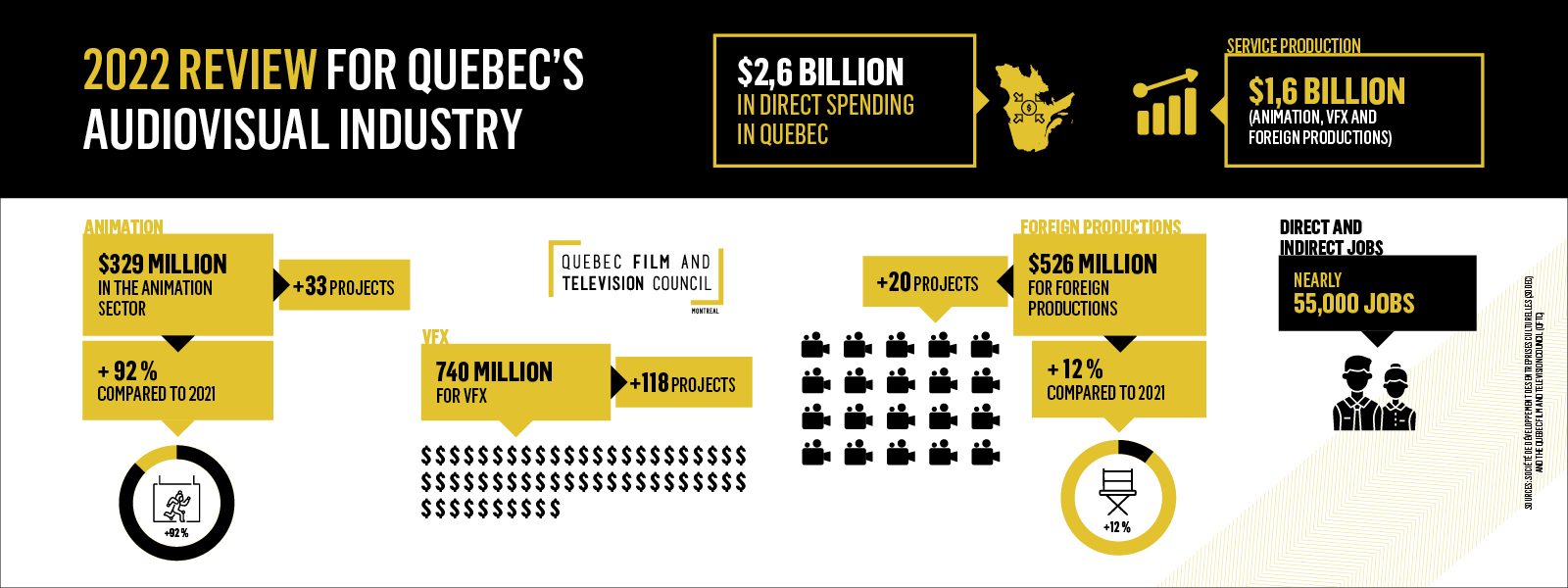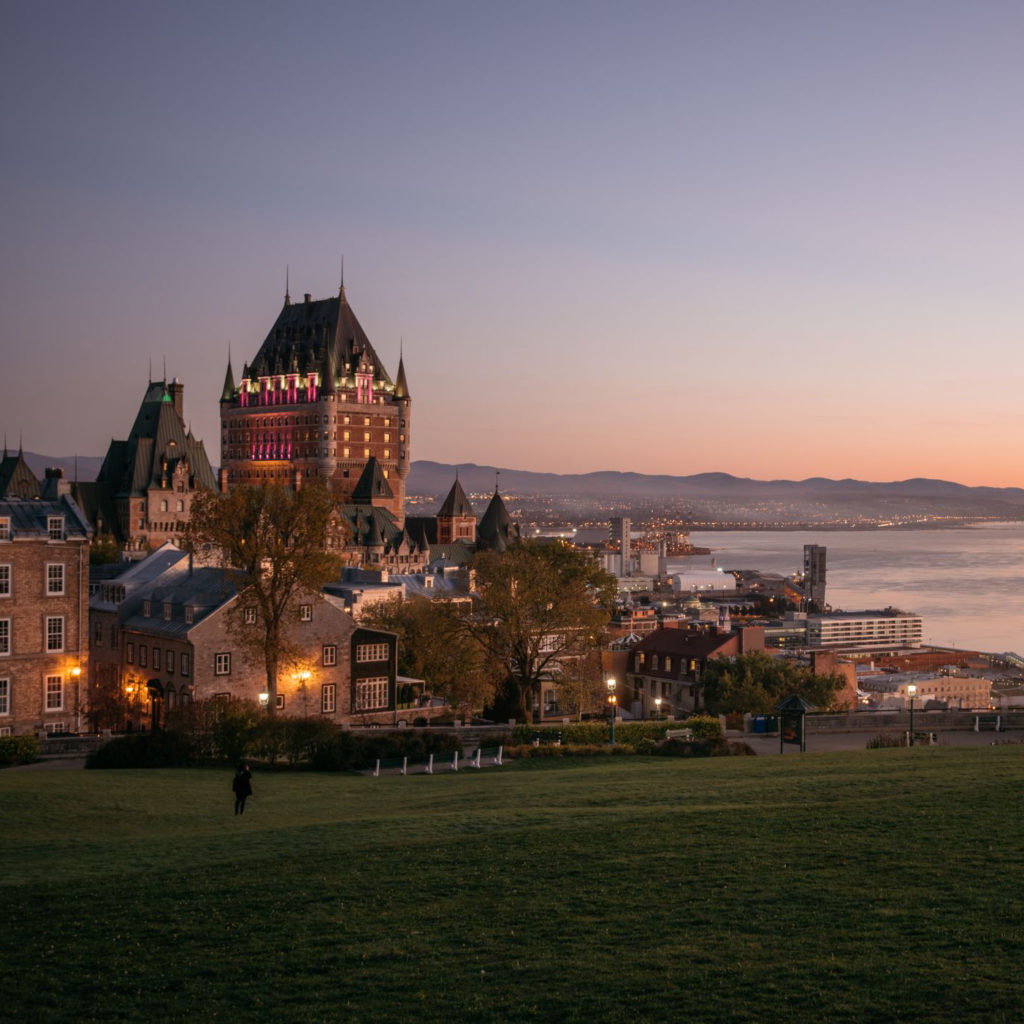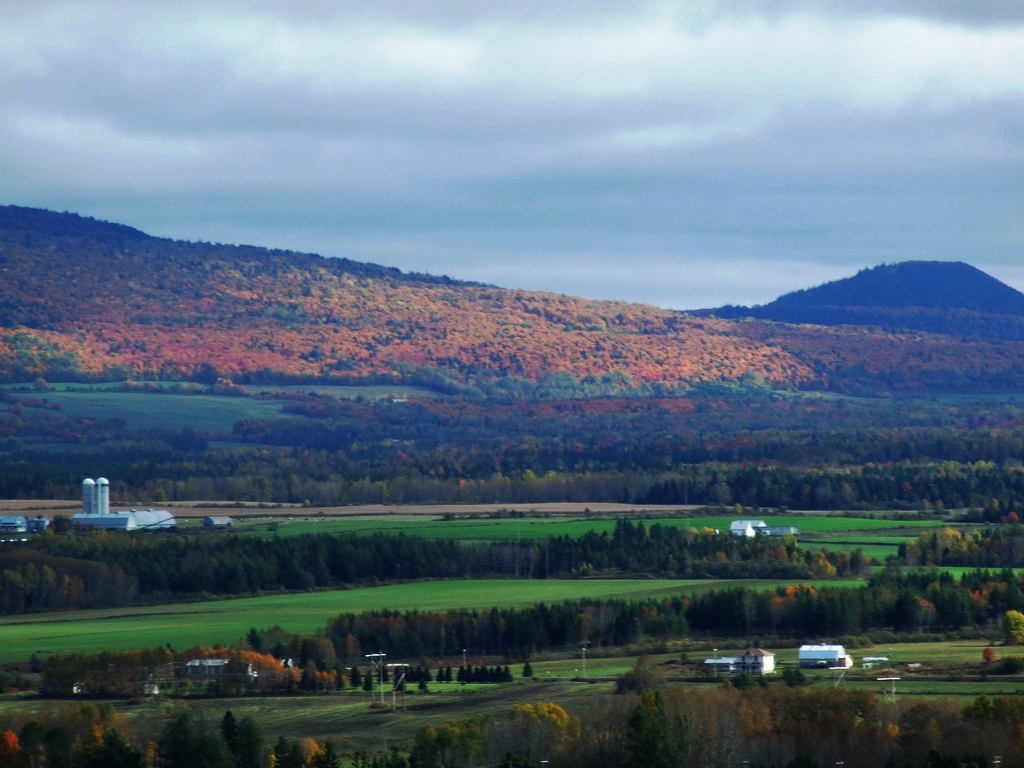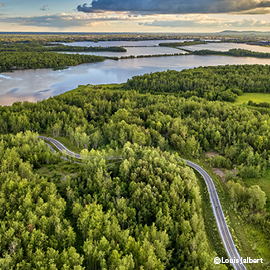BEHIND THE CAMERA
A year of growth for the industry, but caution is advised
MONTRÉAL, January 31, 2023 – The Quebec Film and Television Council (QFTC) is issuing today its annual press release regarding the direct expenditure figures for Quebec’s audiovisual industry.
The 2022 results show once again remarkable economic growth, with almost all industry sectors on the rise. While the QFTC is pleased to see continued growth since the impact of the public health crisis in 2020, the figures published today must be interpreted with caution.
For 2022, the combined sectors (foreign production, visual effects, animation and domestic production) account for $2.6 billion in direct spending in Quebec, a 4% increase over 2021. With an exceptional increase of 92%, the animation sector for service production has seen the greatest growth over the past year.
“2022 is again a year of growth for Quebec’s audiovisual industry. With more than 55,000 workers and an impact of at least $2.6 billion, the data clearly shows that this sector is a significant contributor to Quebec’s economy. Our unique and innovative ecosystem, driven by the creativity and expertise of its talents, draws on an internationally recognized service production and on original content production whose success extends beyond Quebec’s borders. Beyond economic results, the sector as a whole provides significant added value by positively contributing to local culture, tourism and technological development, by attracting foreign film and television productions, and by raising Quebec’s profile on the international stage. However, Quebec’s audiovisual industry is facing several challenges that could, in the short term, hinder its ambitions and its ability to stand out in an increasingly competitive global environment. In this regard as the sector’s economic development agency, the QFTC intends to continue its consultation and collaboration work with all industry stakeholders so that, together, we can develop concerted strategies to support this promising industry and its economic growthfor Quebec,” says Christine Maestracci, QFTC CEO.
Foreign Production
Foreign production had its best year on record with $526 million in direct spending, an increase of 12% over 2021 which saw $470 million in direct spending for a greater number of productions. The growth recorded in 2022 is due to the biggest film production in Quebec’s history, Transformers: Rise of the Beasts, and large-scale television series such as Three Pines, which appears on Amazon Prime.
These figures must therefore be used with caution since they include major film productionsthat were completed in 2021 but whose applicable tax credits were certified by SODEC in 2022.
In reality, Quebec has attracted fewer projects in 2022 and is currently facing stiff competition from many jurisdictions in Canada and abroad that are also trying to attract international film productions. As such, the number of foreign productions filmed in Quebec in 2022 is slightly lower than in recent years with 20 foreign film productions – ten (10) series and ten (10) films – and does not include any blockbusters like in previous years. The international filming sector is experiencing a genuine slowdown. This downturn is currently felt in the industry and will be reflected in the figures for 2023.
Animation
While the public health crisis slowed down some sectors of the AV industry in 2020, the animation sector has, for its part, experienced a significant boom over the past five years, both in terms of production numbers and generated revenues.
In 2022, the animation sector for service production totals 329 million in direct expenditures, an impressive 92% growth over 2021. Some notable projects that Quebec studios and artists have worked on include Teenage Mutant Ninja Turtles: Mutant Mayhem, The Addams Family 2, Scoob! Holiday Haunt, and Curious George, as well as Disenchanted, Arthur and the Children of the Round Table – Season 2, Paradise PD III and The Cuphead Show, among many others.
This does not include original animation works created by Quebec studios and artists, which are captured in the local production figures.
Visual effects
The visual effects sector, for its part, experienced a stable year with $740 million of direct spending, a slight decrease of 5% from 2021. Quebec studios and artists worked on dozens of projects in 2022, including current blockbusters from top U.S. studios such as Wednesday, House of the Dragon and Ms. Marvel, and such films as Aquaman and the Lost Kingdom, Jurassic World: Dominion, Wakanda Forever and John Wick: Chapter 4, to name a few.
These successful titles are the result of the internationally recognized creativity and cutting-edge expertise that has been developed in Quebec. The Quebec visual effects industry has experienced spectacular growth for more than ten years. This exceptional growth contributes to Quebec’s reputation as one of the three major VFX hubs of the world.
Domestic Production
After a record-breaking year in 2021 with direct spending of $1.1 billion, local production in 2022 remains just under $1 billion. It remains important to maintain the support provided to this sector so that Quebec creators can showcase their work both at home and abroad.
















